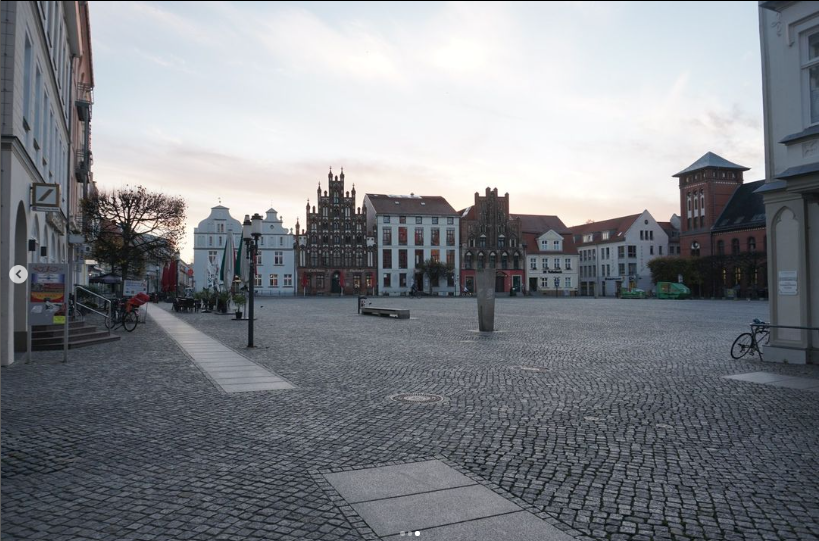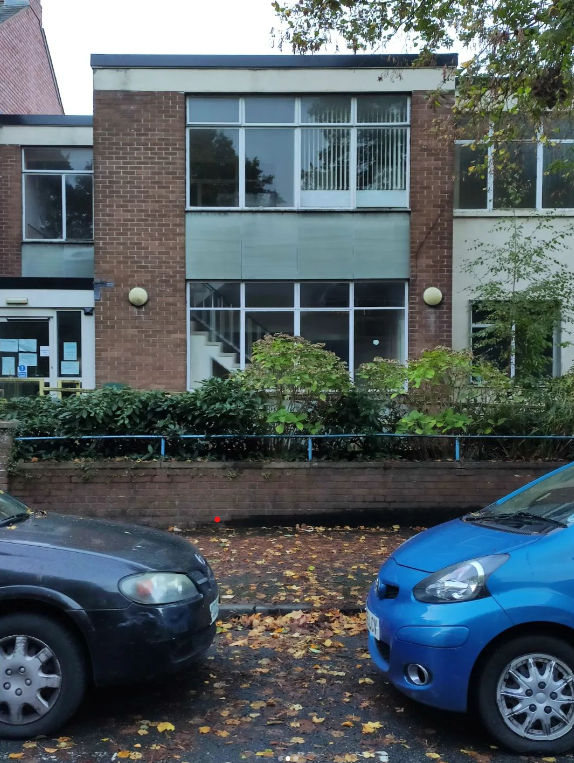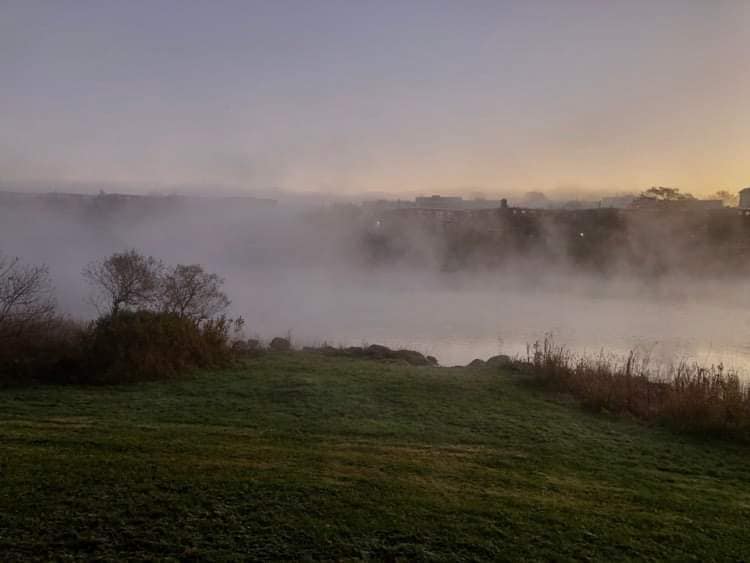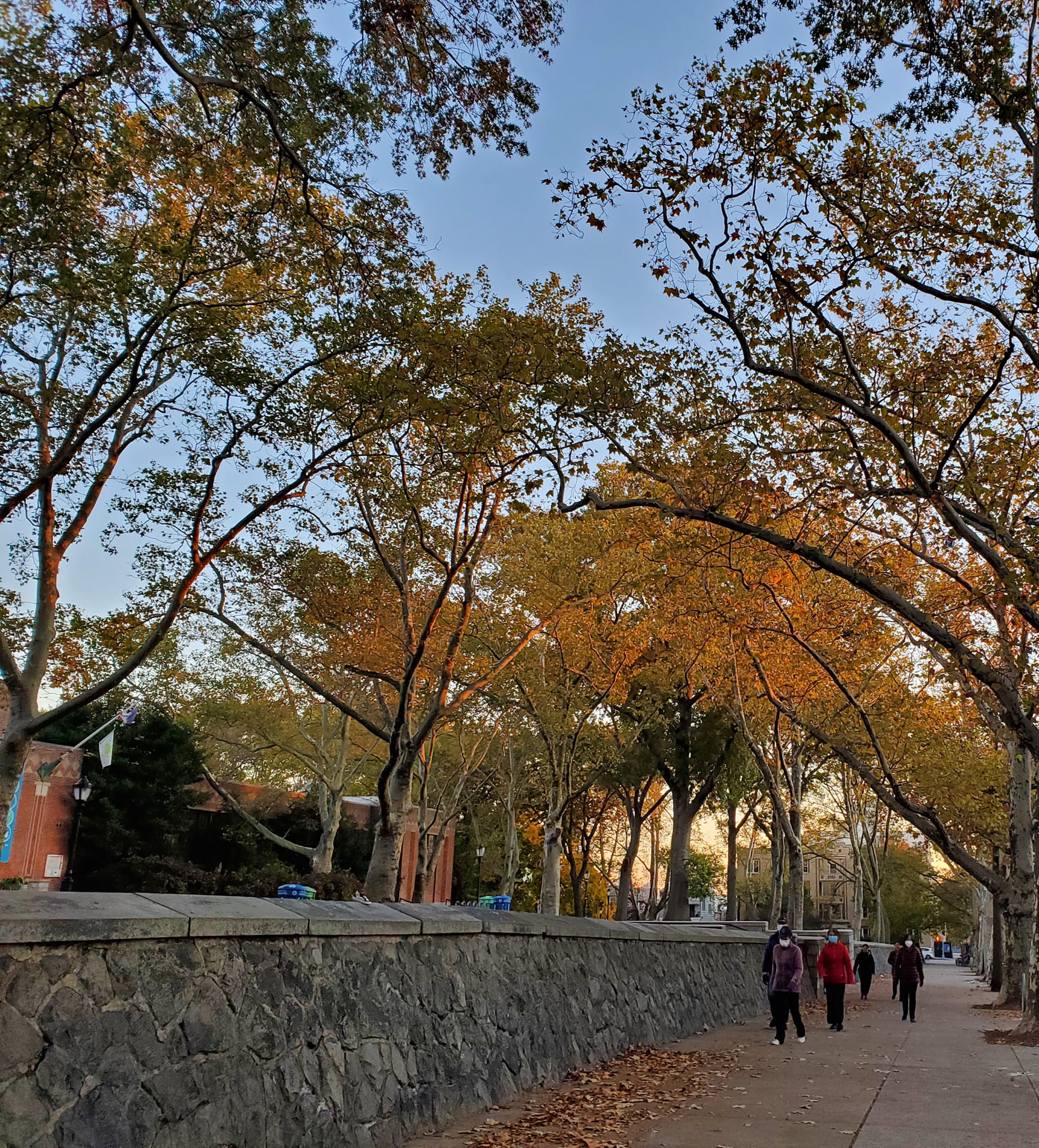30 October - 6 November 2022
Walking the sunrise in the lead up to the time change is a project I love, but also loathe. I am often up at sunrise, but that doesn’t necessarily equate to mobilizing myself for a walk. While most of my co-walkers join me once or twice, I am committed to the whole week (or two). It is always a bit much to drag myself out of bed day after day—particularly, on that one inevitable morning where I have stayed out too late the night before—but, once I find myself out in the sunrise glow, I am generally delighted.

It also helps that someone has usually shared a sunrise with me by the time I have woken up. Over seven seasons a somewhat consistent cohort of walkers has joined. I might wake up to Jackie’s sunrise in Dublin or Barbara’s foggy morning in Nova Scotia. Some places have become familiar: Mathilda’s square in Greifswald evokes memories of walks beyond just British Summer Time, having been a regular feature in other collaborative walks, while Brett’s skies of Fawn Lake Forest feel like a kind of second home. With others it is a familiar style of photography: Carol’s close-ups of foliage, or Laura’s particular interest in architecture (see below). This is, of course, what I love about the project, beyond the inevitable romantic sunrise glow. The development of a sunrise community. Though I missed some of the sunrises of previous seasons—Morag’s wanders in Manchester, the skies above Kel’s garden, or Clare’s walks near the familiar streets of London Fields—perhaps they will be back for a day in season 8 or 9 (or however many seasons we have left until we abolish this bloody ritual).





This has led me to think about questions of scale. The project, currently, remains intimate. A small cohort of sunrise walkers. Perhaps intimate is a generous euphemism, but it wouldn’t be so challenging to scale: a small investment in paid media; a slightly more robust platform for participation. The tag line, ‘replace your morning scroll with a morning stroll’, already exists. The question is why? What is the benefit of scaling. I can hardly manage the interactions as they currently exist. To escalate the project would create a fully different set of obligations (hence the requirement for ‘a slightly more robust platform for participation’).
Recently, I reviewed Lucy Bradnock’s book No More Masterpieces, which explored a number of avant-garde artists in the United States who rejected scale for intimacy. Are more connections necessarily better? There is a capitalist imperative to grow, to scale, to monetize. But this is not the aim of the sunrise walks. How can one monetize a walk at sunrise. The aim, perhaps, is to share the experience more widely. It is a durational practice, not defined by the participation in one walk, or even two in the same season; instead, it is about the bi-annual movement of the clock. The engagement with time, and our relationship to it, over the seasons.

As I enter the fourth year of sunrise walks, I also reflect on the changes to the project over time. It began in Northampton, a first attempt to mobilise a local walking community. Two seasons under the United Kingdom’s lockdown restrictions followed—the importance of connection at a distance heightened, not to mention the COVID-safe behaviour of walking at dawn. Then a return home, first to my parents in California, then to my own American home inNew York City. Among all these changes, other walkers have retained some stability, walking and sharing familiar sunrises in the places where they have made a long lasting home. As the project continues these connections, changes and stabilities will continue to heighten, grow and evolve. At least until they abolish this bloody ritual and I can sleep in all year round.

British Summer Time